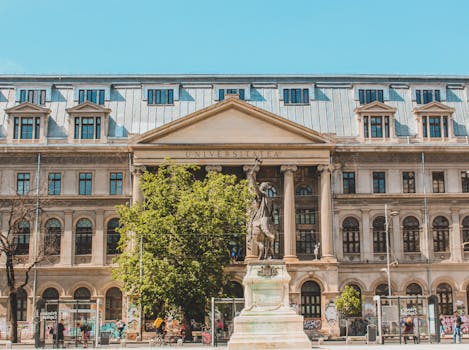
Traveling Through Time: How Europe’s Historical Heritage Shapes Modern Lifestyles in 2025
Traveling Through Time: How Europe’s Historical Heritage Shapes Modern Lifestyles in 2025. Europe, a continent steeped in history and heritage, continues to fascinate travelers and locals alike with its rich cultural landscape. From the ancient ruins of Greece and Rome to the modern architecture of Barcelona and Berlin, Europe’s historical heritage plays a significant role in shaping modern lifestyles. In this article, we will explore how Europe’s past continues to influence its present and future, and what this means for travelers and residents in 2025.
Introduction to Europe’s Historical Heritage
Europe’s historical heritage is a treasure trove of cultural, artistic, and architectural wonders. From the Renaissance to the Industrial Revolution, Europe has been at the forefront of human innovation and progress. The continent is home to some of the world’s most famous landmarks, such as the Eiffel Tower, the Colosseum, and Big Ben, which attract millions of visitors each year. But Europe’s historical heritage is not just about grand monuments and landmarks; it is also about the everyday culture, traditions, and customs that have been passed down through generations.
The Influence of Historical Heritage on Modern Lifestyles
So, how does Europe’s historical heritage shape modern lifestyles? One way is through architecture. Many European cities have preserved their historical buildings and incorporated them into modern urban planning. For example, the historic center of Rome is a UNESCO World Heritage Site, with ancient ruins and Renaissance-era buildings standing alongside modern apartments and offices. This blend of old and new creates a unique and dynamic urban landscape that reflects the city’s rich history and cultural heritage.
Another way in which historical heritage influences modern lifestyles is through art and culture. Europe is home to some of the world’s most famous museums, galleries, and festivals, which showcase the continent’s rich cultural heritage. From the Louvre in Paris to the Tate Modern in London, these institutions provide a window into Europe’s past and present, and offer a glimpse into the future of art and culture. Additionally, many European cities have vibrant cultural scenes, with numerous festivals, concerts, and performances throughout the year.
The Future of Europe’s Historical Heritage
As we look to the future, it is clear that Europe’s historical heritage will continue to play a significant role in shaping modern lifestyles. With the rise of sustainable tourism and cultural heritage preservation, there is a growing recognition of the importance of protecting and promoting Europe’s historical heritage. This includes initiatives to restore and preserve historical buildings, promote cultural events and festivals, and support local artisans and craftspeople.
In conclusion, Traveling Through Time: How Europe’s Historical Heritage Shapes Modern Lifestyles in 2025 is a fascinating topic that highlights the significance of Europe’s rich cultural heritage. From architecture to art and culture, Europe’s past continues to influence its present and future, and offers a unique and dynamic lifestyle for travelers and residents alike.





